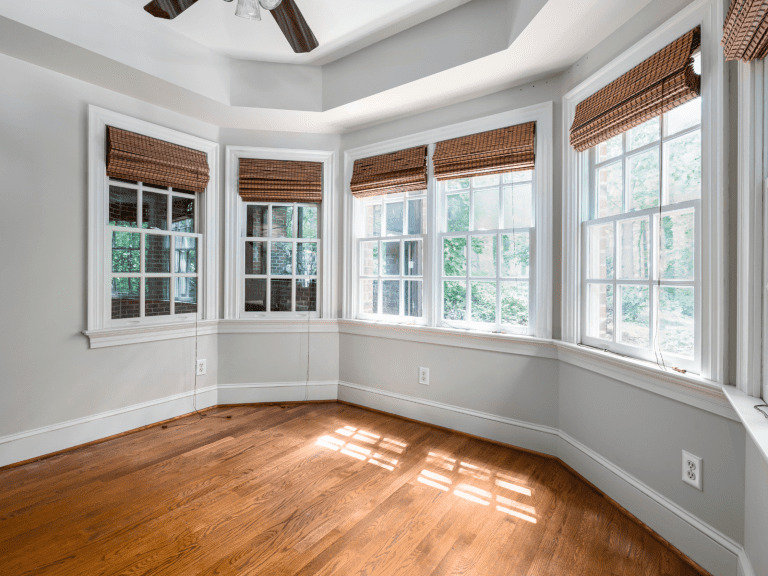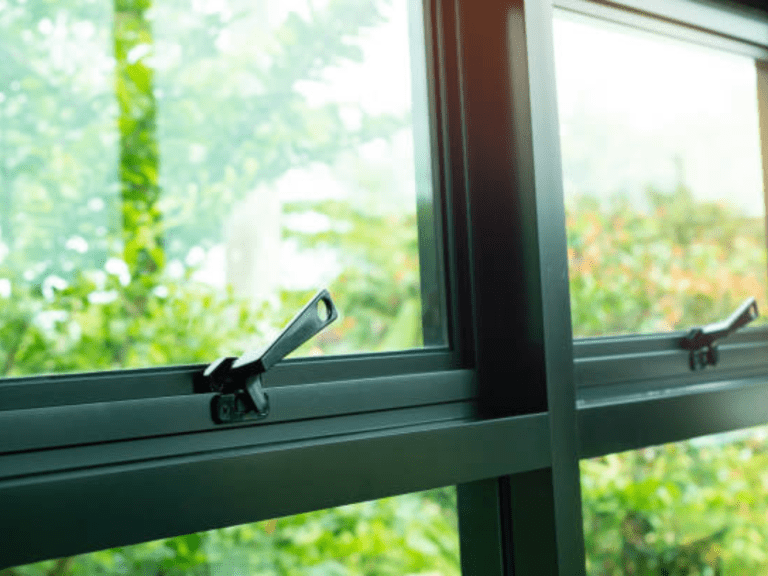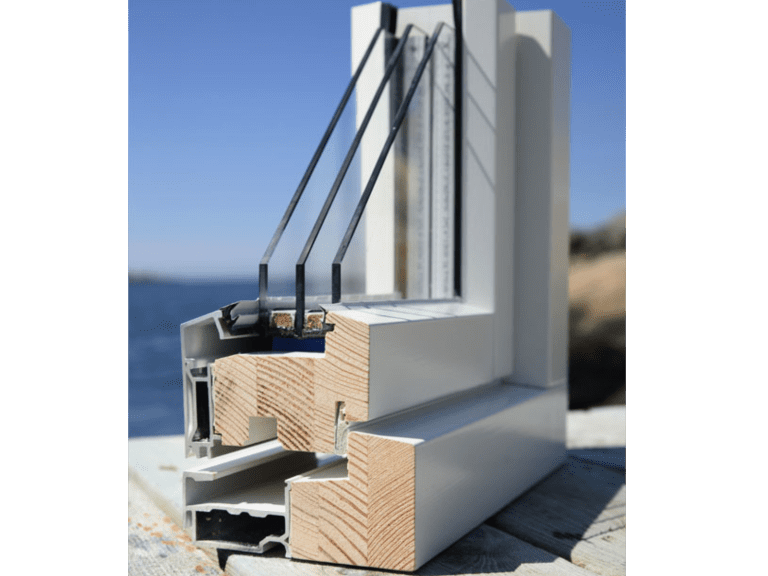A surprising amount of heat escapes through old windows. Some studies suggest it can be as high as 20% of your total energy loss. That’s a big problem for Birmingham households already dealing with rising heating bills. Heavy curtains and draught excluders help a little, but they are often temporary fixes. Eventually, most people realise that replacing the windows is the only long-term solution.
Choosing new windows, however, isn’t always simple. There are different materials, glazing options and energy ratings to consider. On top of that, Birmingham homes vary in style. A Victorian terrace in Moseley won’t suit the same window style as a 1960s semi in Kings Norton or a modern extension in Harborne.
That’s why this guide compares the three most popular window choices in Birmingham right now UPVC, aluminium and composite. Each one has its own strengths, so the aim isn’t to crown a winner. It’s to help you choose the one that fits your home, budget and long-term plans.



The Three Main Window Types Explained
Before deciding on a style, it helps to understand what sets each material apart. The frame plays a big role in insulation, appearance and lifespan. Here’s a quick comparison:
| Material Type | Best Suited For | Typical Lifespan | Energy Efficiency | Maintenance Level |
|---|---|---|---|---|
| UPVC Windows | Budget-friendly and traditional homes | 20–25 years | Excellent (often A-rated) | Low — quick wipe clean |
| Aluminium Windows | Modern homes and extensions | 30–40 years | Good–Excellent | Very low |
| Composite Windows | Heritage or premium installations | 40+ years | Excellent | Minimal |
Each material has its place. Some offer a modern look. Others suit traditional homes better. The key is choosing what complements the building rather than fights against it.
UPVC Windows — Still the Trusted All-Rounder
UPVC windows have been popular in Birmingham for years. There’s a reason they continue to dominate. They are affordable, energy-efficient and easy to maintain, which makes them ideal for semis, terraces and ex-council properties across the city.
Why Homeowners Still Choose UPVC
Modern UPVC frames are far more attractive than older versions. You can now get them in woodgrain finishes, matte greys, off-whites and even black. Dual-colour options are also common. That means you can have white inside and grey outside for a softer finish indoors.
There are other benefits as well:
-
Great Insulation — UPVC naturally blocks heat loss.
-
Cost-Effective for Whole House Replacements — Ideal for those upgrading several windows at once.
-
Little to No Maintenance — No painting or sealing needed.
-
Plenty of Opening Choices — Casement, tilt-and-turn, flush fit and bay styles are all widely available.
Best UPVC Styles for Birmingham Homes
-
Casement windows are the most common choice due to their simple design and easy airflow.
-
Flush fit designs sit neatly within the frame, giving a more traditional look. They work well on Victorian and Edwardian terraces.
-
Tilt-and-turn windows are handy in apartments or upper floors, as they open inwards for safe cleaning.
UPVC might be the practical choice, but it’s not just about cost. Many people choose it because it offers warmth, reliability and a clean finish that suits almost any property.
Aluminium Windows — Slim, Strong and Built for Modern Homes
Aluminium windows have become a favourite in new builds and extensions across Birmingham. Areas like Harborne, Edgbaston and Sutton Coldfield often use them to achieve a sleek, contemporary look that UPVC can’t easily match.
Why Aluminium Is on the Rise
The main appeal of aluminium is its slim frame profile. Less frame means more glass and more natural light. It instantly makes a room feel brighter and more spacious.
Strength is another major advantage. Aluminium is rigid even in thin sections. That means large panes of glass can be supported without bulky frames.
Other key benefits include:
-
Long Lifespan — Often 30 years or more.
-
Low Maintenance — No warping, rotting or fading.
-
Modern Colour Options — Anthracite grey is the most popular. Black and dual-tone finishes are also trending.
-
Eco-Friendly — Aluminium is 100% recyclable.
Are Aluminium Windows Warm Enough?
Older aluminium frames had poor insulation. That’s no longer the case. Modern versions include thermal breaks, which act as a barrier to stop heat escaping through the frame. As a result, most aluminium windows now achieve A or B energy ratings. They are more efficient than many people expect.
Where Aluminium Works Best
Aluminium frames are ideal for:
-
Extensions with bi-fold or sliding doors
-
Kitchen diners with large openings
-
Loft conversions using dormer windows
-
Homes with modern cladding or rendered finishes
If your goal is a clean, architectural look, aluminium is usually the right choice. It adds structure without distraction.
Composite Windows — Classic Appearance with Modern Performance
Composite windows combine a timber-style interior with a durable outer shell, often made from aluminium or UPVC. This gives the warm look of wood indoors while keeping the outside completely weatherproof.
Why Some People Prefer Composite
Composite windows are the premium option, but the higher price brings long-term benefits. Many last 40 years or more with minimal upkeep. Instead of repainting, you simply clean them like UPVC or aluminium.
They also offer excellent insulation, often reaching A+ energy ratings. That makes them perfect for homes that feel cold or draughty in winter.
Key advantages include:
-
Timber-like appearance without the maintenance
-
Dual finishes wood effect inside, modern colour outside
-
Strong, secure and long-lasting
Where Composite Fits Best
Composite frames look most at home in heritage and character properties. They work well in:
-
Victorian bay windows
-
Cottage-style terraces and farmhouses
-
Conservation area homes needing a traditional exterior
However, many high-end new builds now use composite too, especially when aiming for a softer finish than aluminium.
It’s the best of both worlds traditional charm with modern performance.
Energy Ratings — What to Look For in 2025
Energy performance is one of the most important factors when choosing new windows. A high energy rating means less heat escapes, which leads to lower heating bills and a warmer home.
Most windows now display an A to G rating, similar to kitchen appliances.
| Energy Rating | Performance Level | Best For |
|---|---|---|
| A / A+ Rated | Excellent insulation | Cold or north-facing rooms |
| B Rated | Good all-round performance | Most standard replacements |
| C or Below | Lower insulation | Older models or basic units |
You’ll also see a U-value listed. This measures how much heat passes through the window. Lower numbers are better.
For 2025 installations, it’s worth aiming for:
-
1.4 W/m²K or lower for double glazing
-
1.0 W/m²K or lower for triple glazing
Triple glazing offers extra sound reduction, so it’s useful if you live near busy roads, schools or flight paths. However, most Birmingham homes will be perfectly fine with A-rated double glazing.
Matching Window Styles to Birmingham Home Types
The right window can transform the look of a property. Choosing a frame that suits the building style makes a huge difference.
| Home Type | Best Material | Ideal Style |
|---|---|---|
| Victorian / Edwardian Terrace | UPVC Flush or Composite | Sliding sash or slim casement |
| 1930s Semi-Detached | UPVC or Composite | Bay windows with Georgian-style bars |
| 1960s–80s Detached | UPVC or Aluminium | Standard casement or tilt-and-turn |
| Modern Extension / New-Build | Aluminium | Slimline fixed or full-height panes |
| Country Cottage or Heritage Property | Composite | Timber-look flush frames |
The goal is to enhance the original look, not fight against it. A modern aluminium frame looks incredible on a new kitchen extension. But it can feel too sharp on a period frontage. In those cases, composite or wood-effect UPVC offers a softer and more authentic appearance.
What to Consider Before Installation
Even high-quality windows need proper planning before fitting. A few small decisions can improve comfort and avoid future issues.
Here are some things worth checking:
-
Internal reveal space — Removing old frames can expose gaps. Some plastering or trim work may be needed.
-
Ventilation needs — Trickle vents help in bathrooms and utility rooms where moisture builds up.
-
Opening direction — Make sure windows don’t hit blinds, taps or walls when opened.
-
Lead time — UPVC arrives fastest. Aluminium and composite can take slightly longer due to custom colours.
A well-planned installation leads to better insulation and fewer adjustments later on.
Which Window Type Should You Choose?
There’s no single winner. It depends on your priorities. Here’s a simple summary:
| Priority | Best Choice |
|---|---|
| Lowest Cost | UPVC |
| Modern, Slim Look | Aluminium |
| Traditional but Premium Appearance | Composite |
| Best Insulation | A+ UPVC or Composite |
| Longest Lifespan | Aluminium or Composite |
Whether you live in Bearwood, Smethwick or Solihull, the best window is one that keeps your home warm while matching its character. A good installation improves more than just insulation. It also boosts security, noise control and kerb appeal for years to come.






